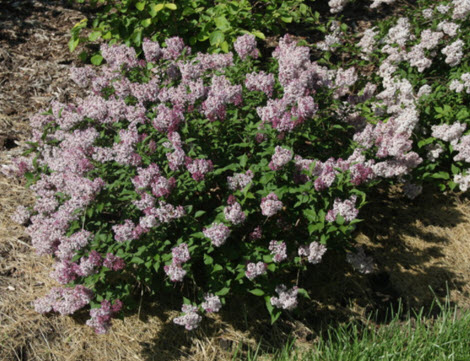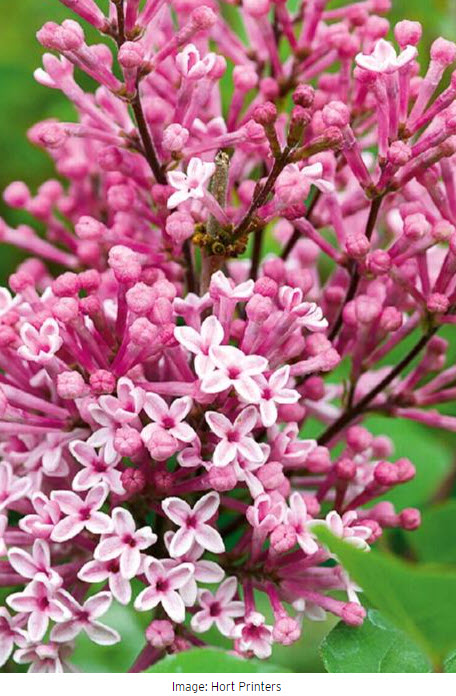Click below to listen to my 2 min. Garden Bite radio show: The Year of the Lilac
The National Garden Bureau has chosen 2022 to be the Year of the Lilac. You may ask why? Lilacs are among the most carefree spring-flowering, multi-stemmed, deciduous shrubs (or small trees).

They are well-loved for their toughness, reliability, and fragrance. My area has battled some with lilac blight. And another Garden Bite on blight.
That said, lilacs are some amazing shrubs/small trees. There are about 30 species of lilacs, Latin name Syringa. The common lilac is syringa vulgaris. Hardy to zone 3, it grows 12 to 16 feet tall and 8 to 12 feet wide. The Lilac-purple flowers attract hummingbirds and butterflies while the shrubs are deer and rabbit-resistant.

And did I tell you there are more than 600 cultivars of this species? Crazy, huh! One of those cultivars is ‘Ludwig Spaeth’. I mention it specifically as it’s used in firescaping. That’s a landscape design that reduces house and property vulnerability to wildfire, which I talked about last week. It grows 6 to 10 feet tall and 6 to 8 feet wide. It’s a late bloomer with sweetly perfumed dark purple flowers.
‘President Lincoln’ grows 8 to 10 feet tall and wide. This is an heirloom cultivar that was introduced in 1916 and is considered one of the bluest lilacs with fragrant panicles of flowers that attract butterflies and hummingbirds.

And as promised… a 2022 introduction!!!
Syringa x ‘Josee’ – Not only is it small and a rebloomer, but it also has one of the widest hardiness ranges of any lilac—from Zones 3 to 9! Slowly growing into a 4- to 5-foot mound, highly fragrant, lavender-pink, large flower clusters bloom heavily in spring and continue to blossom sporadically through summer, attracting butterflies and hummingbirds.

